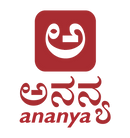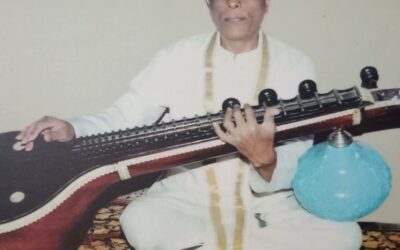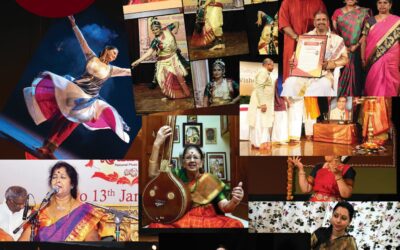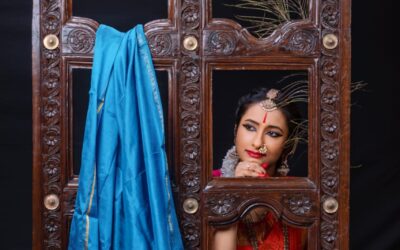ರಸಾನುಭವ ನೀಡಿದ ನೃತ್ಯಾರಾಧನೆ-ಅನನ್ಯ ‘ರಸಸಂಜೆ’
-ವೈ.ಕೆ.ಸಂಧ್ಯಾ ಶರ್ಮ
ನೃತ್ಯಜಗತ್ತಿನಲ್ಲಿ ಇಂದು ನಾಟ್ಯರಾಣಿ ಶಾಂತಲಾ ಪ್ರಶಸ್ತಿ ಪುರಸ್ಕೃತೆ ಶ್ರೀಮತಿ ರಾಧಾ ಶ್ರೀಧರ್ ಅವರ ಹೆಸರು ಜಗದ್ವಿಖ್ಯಾತ. ಉತ್ತಮ ಗುಣಮಟ್ಟದ ಶಿಕ್ಷಣ, ಬದ್ಧತೆಯ ತರಬೇತಿ, ನಿಷ್ಕಾಮಸೇವೆಗೆ ಆದರ್ಶಪ್ರಾಯರು ಈ ಹಿರಿವಯಸ್ಸಿನ ನುರಿತ ಶ್ರೇಷ್ಠ ಗುರು. ಕಳೆದ ಐವತ್ತೈದು ವರ್ಷಗಳಿಂದ ನಿರಂತರ ನಾಟ್ಯರಂಗದಲ್ಲಿ ಸಕ್ರಿಯರಾಗಿರುವ ಇವರಿಗೆ ಸದಾ ಹೊಸಪ್ರಯೋಗಗಳ ಚಿಂತನೆ, ನೂತನ ಪರಿಕಲ್ಪನೆಯ ಕಾರ್ಯಕ್ರಮಗಳ ಆಯೋಜನೆ ಅವರ ಕನಸು. ನೃತ್ಯಗುರುಗಳಿಗೆ ಅತ್ಯವಶ್ಯವಾದ ವ್ಯಾಯಾಮಭರಿತ ಚಟುವಟಿಕೆಯ ಜೀವನ ನಡೆಸುತ್ತಿರುವ, ಆರೋಗ್ಯಪೂರ್ಣ-ತೆಳ್ಳನೆಯ ಎತ್ತರದ ನಿಲುವನ್ನು ಕಾಪಾಡಿಕೊಂಡು ಬಂದಿರುವ ಎಂಭತ್ತಾರರ ಹರೆಯದಲ್ಲೂ ಚಿಮ್ಮುವ ಅವರ ಉತ್ಸಾಹ-ಸಡಗರ ಕಂಡರೆ ಎಂಥವರಿಗೂ ಬೆರಗು. ಪ್ರತಿದಿನ ಶಿಷ್ಯರಿಗೆ ನಾಟ್ಯಬೋಧೆ, ನಟುವಾಂಗ, ಮುಖಾಭಿವ್ಯಕ್ತಿಯ ಅಭಿನಯ ಹೇಳಿಕೊಡುವ ಪರಿಪಾಠ. ಅಗತ್ಯ ಬಂದಾಗ ಎದ್ದುನಿಂತು ಅಡವು-ಆಂಗಿಕಾಭಿನಯಗಳನ್ನು ಹೇಳಿಕೊಡುವುದಕ್ಕೂ ಸೈ.
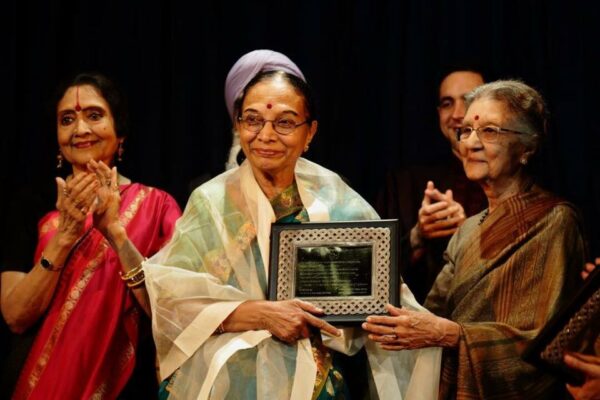
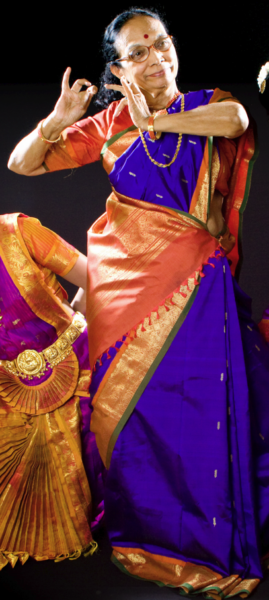
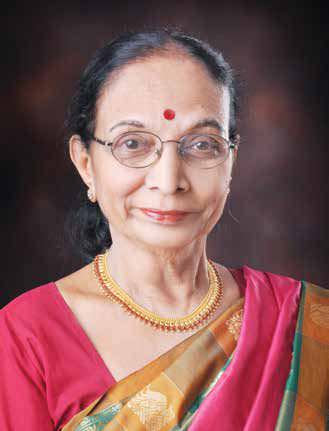
ಐವತ್ತೈದು ವರ್ಷಗಳ ಹಿಂದೆ ಅವರು ಹುಟ್ಟು ಹಾಕಿದ ಸಂಸ್ಥೆ ‘ವೆಂಕಟೇಶ ನಾಟ್ಯ ಮಂದಿರ’ ಇಂದು ಸುಪ್ರಸಿದ್ಧ ಅಷ್ಟೇ ಅಲ್ಲ, ಜಗತ್ತಿನುದ್ದಗಲ ತನ್ನ ಶಿಷ್ಯರ ಮೂಲಕ ಕ್ರಿಯಾಶೀಲವಾಗಿದೆ, ನೃತ್ಯ ಸಂಸ್ಕೃತಿಯನ್ನು ವಿಸ್ತಾರವಾಗಿ ಪ್ರಚುರಪಡಿಸುತ್ತಿದೆ. ನಾಲ್ಕು ತಲೆಮಾರುಗಳ ಕಲಾವಿದರನ್ನು ಸೃಷ್ಟಿಸಿರುವ ಶ್ರೀಮತಿ ರಾಧಾ ಶ್ರೀಧರ್, ಕಳೆದ ಮೂರು ದಶಕಗಳಿಂದ ಸತತವಾಗಿ, ದೇಶ-ವಿದೇಶದ ಉದಯೋನ್ಮುಖ ಮತ್ತು ಪ್ರತಿಷ್ಟಿತ ನೃತ್ಯಕಲಾವಿದರಿಗೆ ವೇದಿಕೆಯನ್ನು ನೀಡಿ, ಅವರ ಪ್ರತಿಭಾ ಪ್ರಕಾಶಕ್ಕೆ ಉತ್ತೇಜನ ನೀಡುತ್ತ ಬಂದಿರುವ ಪ್ರತೀಕ, ‘ವೆಂಕಟೇಶ ನಾಟ್ಯಮಂದಿರ’ದ ‘’ರಸಸಂಜೆ’’ ಪ್ರತಿಷ್ಠಿತ ನೃತ್ಯೋತ್ಸವ. ಪ್ರತಿವರ್ಷ ನಡೆಸಿಕೊಂಡು ಬಂದಿರುವ ಈ ‘ವಾರ್ಷಿಕೋತ್ಸವ’ ಸಮಾರಂಭ ತುಂಬಾ ಅರ್ಥಪೂರ್ಣವಾಗಿ ಆಯೋಜಿಸಲಾಗುತ್ತದೆ.
ಪ್ರಸಕ್ತ ವರ್ಷದ ಶುಭಾರಂಭದ ‘ರಸಸಂಜೆ’ಯು ಹಳೆ ಬೇರು-ಹೊಸ ಚಿಗುರು ಕೂಡಿರಲು ಮರ ಸೊಬಗು ಎನ್ನುವಂತಿತ್ತು. ಅಂದು-ಹಿರಿಯ ನೃತ್ಯಗುರು-ಕಲಾವಿದೆ ಗಾಯತ್ರೀ ಕೇಶವನ್ ತಂಡ ಹಾಗೂ ನವಝೇಂಕಾರದ ನೃತ್ಯಕಲಾವಿದ-ಗುರು ‘ವೈಷ್ಣವಿ ನಾಟ್ಯಶಾಲೆ’ಯ ನಾಟ್ಯಾಚಾರ್ಯ ಮಿಥುನ್ ಶ್ಯಾಮ್ ಅವರಿಗೆ ತಕ್ಕ ಶಿಷ್ಯ ಶಶಾಂಕ್ ಕಿರಣ್ ನಾಯರ್, ವೇದಿಕೆಯ ಮೇಲೆ ಇಬ್ಬರೂ ಸಾತ್ವಿಕ ಮತ್ತು ಮಿಂಚಿನ ಬೆರಗನ್ನು ಚೆಲ್ಲಿದ ಅನುಪಮ ಕಾರ್ಯಕ್ರಮವನ್ನು ನೀಡಿದರು. ಗುರು ಗಾಯತ್ರಿ ಕೇಶವನ್ ಅವರೊಂದಿಗೆ ಮೈತ್ರೇಯಿ ಬಾರ್ವೇ, ಬಿಂದುಮತಿ ಸತೀಶ್, ಅಮೃತವಲ್ಲಿ, ತ್ರಿಶಾಲ ಸಿದ್ದಯ್ಯ, ಅನನ್ಯ ಬಾರ್ವೇ ಮತ್ತು ಕೀರ್ತನಾ ಸುರೇಶ್ ತಮ್ಮ ನುರಿತ ಹೆಜ್ಜೆಗಳಲ್ಲಿ ಸುಮನೋಹರ ಆಂಗಿಕಾಭಿನಯಗಳ ಸೊಗಡಿನಲ್ಲಿ ನರ್ತಿಸಿದರು. ಮೊದಲ ಪ್ರಸ್ತುತಿಗಳಾದ ಗಣೇಶಶ್ಲೋಕ ಮತ್ತು ದಕ್ಷಿಣಭಾಗದ ಭಜನೆಯ ಸಂಪ್ರದಾಯದಂತೆ ಇಷ್ಟದೇವತೆಗಳ ಪ್ರಾರ್ಥನೆ, ರಾಮ-ಕೃಷ್ಣನನ್ನು ಕುರಿತ ‘ತೋಡಯಂ’ ಕೃತಿ ಹಾಗೂ ಶಂಕರಾಚಾರ್ಯರ ‘ಶಿವಾನಂದ ಲಹರಿ’ಯ ‘ಶಿವಶ್ಲೋಕ’ವು ಪಂದನಲ್ಲೂರು ಬಾನಿಯ ಶಾಸ್ತ್ರೀಯ ನೆಲೆಯ ಅಂಗಶುದ್ಧ ನರ್ತನ ಬಹು ಅಚ್ಚುಕಟ್ಟಾಗಿ ಮೂಡಿಬಂದವು.

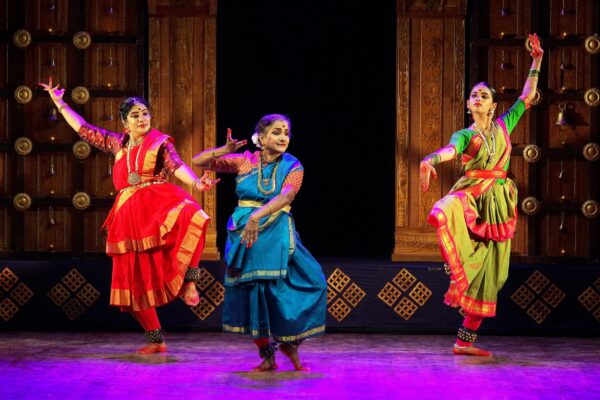

ಹನ್ನೆರಡನೆಯ ಶತಮಾನದ ದಾರ್ಶನಿಕ ಶರಣ ಬಸವಣ್ಣನವರು, ಧಾರ್ಮಿಕ ಅಸಮಾನತೆಯನ್ನು ಖಂಡಿಸಿದವರು, ಸಾಮಾಜಿಕ ಬದಲಾವಣೆಗಾಗಿ ಶ್ರಮಿಸಿದವರು. ಅವರ ಸಾಮಾಜಿಕ ಜಾಗೃತಿಯ ಎರಡು ಅರ್ಥಪೂರ್ಣ ವಚನಗಳನ್ನು ದೃಶ್ಯಾತ್ಮಕವಾಗಿ ಗಾಯತ್ರಿ ಮತ್ತು ಶಿಷ್ಯರು ಸೊಗಸಾಗಿ ಪ್ರಸ್ತುತಪಡಿಸಿದರು. ‘ಕಳಬೇಡ ಕೊಲಬೇಡ ಹುಸಿಯ ನುಡಿಯಲು ಬೇಡ’ ಮತ್ತು ‘ಕಲ್ಲನಾಗರ ಕಂಡರೆ’ -ಜೀವನದಲ್ಲಿ ಪಾಲಿಸಬೇಕಾದ ಮಹತ್ವದ ಸತ್ಯಗಳನ್ನು ಅರಹುವ ಸಾರವತ್ತಾದ, ಜೀವನದ ವೈರುಧ್ಯ-ವಿಪರ್ಯಾಸಗಳನ್ನು ವಿಡಂಬಿಸುವ ಎರಡು ವಚನಗಳನ್ನು ಮನನೀಯವಾಗಿ ಸಾಕಾರಗೊಳಿಸಿದರು. ಜಯದೇವನ ‘ಗೀತಗೋವಿಂದ’ದ ‘ಅಷ್ಟಪದಿ’ ಭಾವದೀಪ್ತಿಯ ಹೃದಯಸ್ಪರ್ಶೀ ಮನಮೋಹಕ ರಚನೆಗಳು. ಭೇಟಿ ಮಾಡುವುದಾಗಿ ರಾಧೆಗೆ ಮಾತುಕೊಟ್ಟ ಕೃಷ್ಣ ಮಾತಿಗೆ ತಪ್ಪಿದ್ದಾನೆ. ಅವಳ ವಿರಹದ ನೋವಿನ ಅನಂತ ಮುಖಗಳನ್ನು ಕಲಾವಿದೆ ಗಾಯತ್ರಿ ತಮ್ಮ ಪ್ರೌಢ ಅಭಿನಯದಲ್ಲಿ ಸಂಯಮದ ಆಯಾಮದಲ್ಲಿ ಅನಾವರಣಗೊಳಿಸಿದರು. ಸೌಮ್ಯವಾದ ನೃತ್ತಗಳಿಂದ ಕೂಡಿದ್ದ ‘ತಿಲ್ಲಾನ’ದೊಂದಿಗೆ ನೃತ್ಯಪ್ರಸ್ತುತಿ ಸಂಪನ್ನಗೊಂಡಿತು.
ಕಾರ್ಯಕ್ರಮದ ಉತ್ತರಾರ್ಧದ ನೃತ್ಯಶೈಲಿ ಸಂಪೂರ್ಣ ಭಿನ್ನವಾಗಿತ್ತು. ಯುವಕಲಾವಿದ ಶಶಾಂಕ್ ಕಿರಣ್ ತಮ್ಮ ಚೈತನ್ಯಭರಿತ ಆಂಗಿಕಾಭಿನಯಗಳಿಂದ ಇಡೀ ರಂಗವನ್ನು ಬಳಸಿಕೊಂಡು ಪಾದರಸದ ರಸಸ್ಪರ್ಶ ನೃತ್ತಗಳ ಝೇಂಕಾರದಲ್ಲಿ ಮಂತ್ರಮುಗ್ಧಗೊಳಿಸಿದರು. ಆಕರ್ಷಕ ಅಂಗಸೌಷ್ಟವದ ಕಲಾವಿದ ರಂಗವನ್ನು ಪ್ರವೇಶಿಸಿದ ಬಗೆಯೇ ಅನನ್ಯವಾಗಿತ್ತು. ಮೊದಲಿಗೆ ಅಂಗಶುದ್ಧ ನರ್ತನದಿಂದ ‘ಪುಷ್ಪಾಂಜಲಿ’ಯನ್ನು ಸಲ್ಲಿಸಿ, ಉಚ್ಚಿಷ್ಠರೂಪದ ಗಣಪತಿಯ 32 ರೂಪಗಳನ್ನು ತಂತ್ರರೂಪದಲ್ಲಿ ವಿಶಿಷ್ಟವಾಗಿ ಕಂಡರಿಸಿದರು. ವರ್ಚಸ್ವೀ ಮುಖಾಭಿವ್ಯಕ್ತಿಯ, ತೀವ್ರಭಾವನೆಗಳು ಒಸರುವ ಅವರ ಅಭಿನಯ ಮನಸೂರೆಗೊಳ್ಳುವಂತಿತ್ತು. ಮಿಂಚಿನ ಸಂಚಾರದ ನೃತ್ತಾವಳಿಗಳ ಓಘ ವಿಶೇಷವಾಗಿತ್ತು. ಸಾಹಿತ್ಯವಿಲ್ಲದೆಯೂ ಸುಲಭವಾಗಿ ಅರ್ಥ ಮಾಡಿಕೊಳ್ಳಬಲ್ಲಂಥ ಸ್ಫುಟವಾದ ಆಂಗಿಕಗಳು, ಅಭಿನಯ ಅತ್ಯಾಕರ್ಷಕವಾಗಿದ್ದವು. ಅಂತ್ಯದ ಗಣಪತಿಯ ಭಂಗಿ ಮನಮೋಹಕವಾಗಿತ್ತು. ಅನಂತರ-ಶ್ರೀ ಸ್ವಾತಿ ತಿರುನಾಳ್ ಮಹಾರಾಜರ ರಚನೆ ‘ಭಾವಯಾಮಿ ರಘುರಾಮಂ’-ರಾಮಾಯಣದ ಪ್ರಮುಖ ಘಟನೆಗಳು ಸಂಕ್ಷಿಪ್ತವಾಗಿ ಅಷ್ಟೇ ಪರಿಣಾಮಕಾರಿಯಾಗಿ ಬಿತ್ತರಗೊಂಡವು. ಇಲ್ಲಿ ಸ್ವತಃ ಶ್ರೀರಾಮನೇ ಕಥೆಯನ್ನು ನಿರೂಪಿಸುತ್ತ ಹೋದಂತೆ, ವಾಗ್ಗೇಯಕಾರ ಅದನ್ನು ಬರೆದುಕೊಂಡಂತೆ ಚಿತ್ರಿಸಿರುವ ಕಲ್ಪನೆ ಅನುಪಮ. ಶ್ರೀರಾಮನ ವರ್ಣನೆಯನ್ನು ಶಶಾಂಕ್ ತಮ್ಮ ಉತ್ಕೃಷ್ಟ ಅಭಿನಯದಲ್ಲಿ ಸಾಕ್ಷಾತ್ಕರಿಸಿದರು. ರಾಮನ ವಿವಿಧ ಭಂಗಿಗಳನ್ನು ನೃತ್ತಗಳಲ್ಲೇ ಸಾಕಾರಗೊಳಿಸಿದ ಬಗೆ ಮನಮೋಹಕ. ರೋಮಾಂಚಕ ಆಕಾಶಚಾರಿಗಳು, ಮಿಂಚಿನ ವೇಗದ ಭ್ರಮರಿಗಳು, ಸುಮನೋಹರ ಕರಣಗಳು, ಲೀಲಾಜಾಲ ನೃತ್ತಾಮೋದ ಆನಂದದಾಯಕವಾಗಿದ್ದವು. ನರ್ತಕನ ಸಾತ್ವಿಕಾಭಿನಯ ಹೃದಯಸ್ಪರ್ಶಿಯಾಗಿ ಮನಮುಟ್ಟಿತು. ನಾಟ್ಯಾಧಿಪತಿ ನಟರಾಜನ ಆನಂದತಾಂಡವದ ಸೊಗಸನ್ನು ಕಟ್ಟಿಕೊಟ್ಟ ‘ಕಾಲ್ ಮಾರಿ ಆಡಿಯಾಡಿಯಾರ್ ಕನಕಸಭೇಶ’ ಕೃತಿಯನ್ನು ಕಲಾವಿದ ಅಮೋಘವಾಗಿ ನಿರೂಪಿಸಿ, ತನ್ನ ಮಿಂಚಿನ ನೃತ್ತಧಾರೆಯಿಂದ ರೋಮಾಂಚಗೊಳಿಸಿದರೆ, ಗುರು ಮಿಥುನರ ಅಸ್ಖಲಿತ ನಟುವಾಂಗದ ಬನಿ ಮೈನವಿರೇಳಿಸಿತು. ಲೀಲಾಜಾಲದ ಮಂಡಿ ಅಡವು, ಕಾಲನ್ನು ಊರ್ಧ್ವ ಮುಖವಾಗಿ ಸಲೀಸಾಗಿ ಎತ್ತಿದ ಭಂಗಿಯ ಆಕಾಶಚಾರಿ, ಢಮರುಗ ಹಿಡಿದು ನರ್ತಿಸಿದ ವಿಶಿಷ್ಟ ಪರಿ ಮನವನ್ನು ಆವರಿಸಿದವು. ಮುರುಗನ ದರ್ಶನಕ್ಕೆ ಹಾತೊರೆದ ಭಕ್ತನ ವಿಹ್ವಲತೆ, ಭಕ್ತಿಯ ತೀವ್ರತೆಯನ್ನು ಶಶಾಂಕ್, ‘ಪದಂ’ನಲ್ಲಿ ಅತ್ಯಂತ ಮನಮುಟ್ಟುವಂತೆ ಚಿತ್ರಿಸಿದರು. ಕಾವಡಿ ಹೊತ್ತ ಭಕ್ತನಾಗಿ ಜಾನಪದ ಲಹರಿಯಲ್ಲಿ ಉತ್ಸಾಹದಿಂದ ಕುಣಿತದ ಹೆಜ್ಜೆ ಹಾಕಿದ ಕಲಾವಿದ ಮುಂದೆ- ದೈವದರ್ಶನವಾಗದೆ ಸಂಕಟಪಡುವ ಭಕ್ತಿ ಪರಾಕಾಷ್ಠೆಯ ಅಭಿನಯವನ್ನು ಕರುಣಾರ್ದ್ರ ಭಾವದ ಸಾಂದ್ರತೆಯಲ್ಲಿ ಘನೀಕರಿಸಿದರು. ಅಂತ್ಯದಲ್ಲಿ- ಬಾಣದೋಪಾದಿಯಲ್ಲಿ ವೇದಿಕೆಯ ಉದ್ದಗಲಕ್ಕೂ ಹರಿದಾಡುತ್ತ, ರಂಗಾಕ್ರಮಣದಲ್ಲಿ ಮಿಂಚಿನ ವೇಗದ ನೃತ್ತ ಸಲಿಲವನ್ನು ಹರಿಸಿದ ಶಶಾಂಕ್ ‘ತಿಲ್ಲಾನ’ ವನ್ನು ಚಿರಸ್ಮರಣೀಯವಾಗಿ ನಿರೂಪಿಸಿದರು.
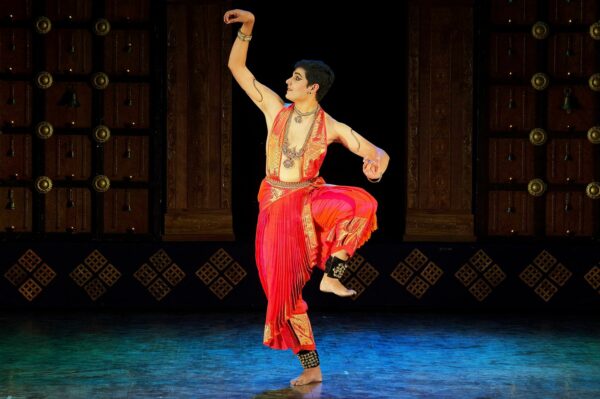
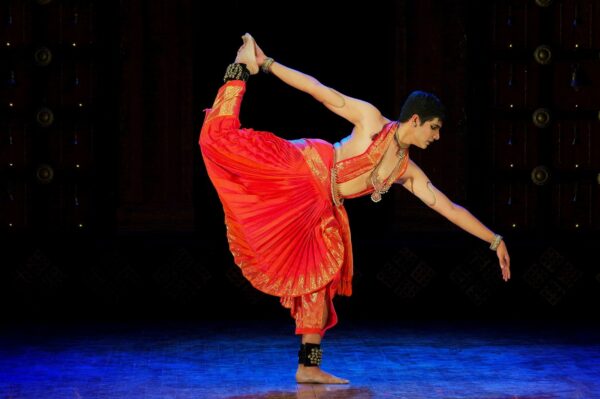

**********
A Meaningful Relationship with Dance
Dr. Veena Murthy Vijay
Drishti Art Foundation celebrated its 18th year of a meaningful relationship with dance on 21st January 2023. There might be many dance festivals and dance performances conducted every day but what makes Drishti National Dance Festival standout is its alignment with the social and artistic values in our community. This year, the festival’s theme “SAMARPAN” or offering of dance was a beautiful gesture by Anuradha Vikranth to her Guru Dr Padma Subrahmanyam, a living legend.
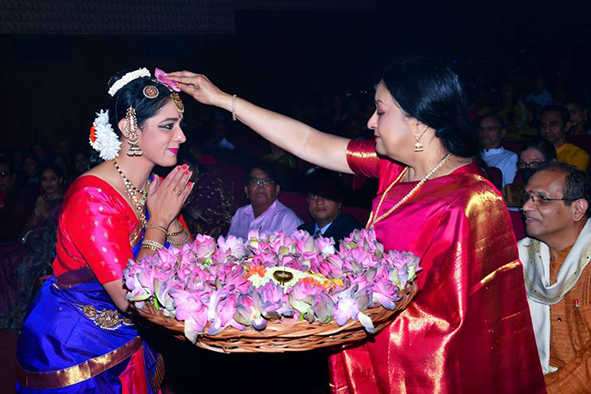 Many of the artists and audience that were present that day have always come for the Drishti National Dance Festival year after year – naturally, one feels a sense of belonging in the vibes at the theatre. Anuradha performed the opening number paying a tribute to the Padma Bhushan awardee, the legend Dr Padma Subrahmanyam. Everyone in the audience understood the mysticism and the spiritualism behind the relationship between a Guru and Shishya and the value of such a bond. One of the great gurus, Dr. Lalitha Srinivasan who was sitting next to me also commented that “this relationship between the Guru and Shishya is so unique, it is so elevated that no other relationship can be equal to this, not even that of a mother and a child” and I had completely agreed with her. This was seen in Anuradha’s dance, in her offering and in her devotion to dance. It was a spectacle to witness this grand offering made by Anuradha Vikranth. That is why I said this is the 18th year of Drishti’s meaningful relationship with dance.
Many of the artists and audience that were present that day have always come for the Drishti National Dance Festival year after year – naturally, one feels a sense of belonging in the vibes at the theatre. Anuradha performed the opening number paying a tribute to the Padma Bhushan awardee, the legend Dr Padma Subrahmanyam. Everyone in the audience understood the mysticism and the spiritualism behind the relationship between a Guru and Shishya and the value of such a bond. One of the great gurus, Dr. Lalitha Srinivasan who was sitting next to me also commented that “this relationship between the Guru and Shishya is so unique, it is so elevated that no other relationship can be equal to this, not even that of a mother and a child” and I had completely agreed with her. This was seen in Anuradha’s dance, in her offering and in her devotion to dance. It was a spectacle to witness this grand offering made by Anuradha Vikranth. That is why I said this is the 18th year of Drishti’s meaningful relationship with dance.
 Dance teaches us to love, to be compassionate, to be forgiving, to look at our mistakes with reality and correct them and to have the courage to face anything in the journey of life. Each of the artists who were present to perform on stage were stars in their own right. The renowned film star and dancer Shobana and the renowned Guru and dancer Priyadarsini Govind ticked off the evening with their vibrant and scintillating performances through their presentation of the Varnam, Padam and Thillana. Together they brought in another value of dancers coming together in harmony and also spreading the joy of sharing and being together amidst the chaotic society that we have created. If Anuradha showed the path of surrendering to the Guru, Priyadarsini and Shobana brought the value of being friends, sharing and also living the value of dance and evolving to perfection. Each nuance of the dance was so etched with an able and commanding set of musicians supporting both Shobana and Priyadarsini to bring about an amazing thrill and joy to the audience.
Dance teaches us to love, to be compassionate, to be forgiving, to look at our mistakes with reality and correct them and to have the courage to face anything in the journey of life. Each of the artists who were present to perform on stage were stars in their own right. The renowned film star and dancer Shobana and the renowned Guru and dancer Priyadarsini Govind ticked off the evening with their vibrant and scintillating performances through their presentation of the Varnam, Padam and Thillana. Together they brought in another value of dancers coming together in harmony and also spreading the joy of sharing and being together amidst the chaotic society that we have created. If Anuradha showed the path of surrendering to the Guru, Priyadarsini and Shobana brought the value of being friends, sharing and also living the value of dance and evolving to perfection. Each nuance of the dance was so etched with an able and commanding set of musicians supporting both Shobana and Priyadarsini to bring about an amazing thrill and joy to the audience.
What followed next was a beautiful piece by Vineeth Radhakrishnan, a popular actor and also a disciple of Guru Dr Padma Subrahmanyam. He presented a devotional piece on mother Goddess Meenakshi which has been choreographed by Guru Dr Padma Subrahmanyam. His years of experience and the discipline of dance was neatly pronounced and Dr Padma’s style of Bharatanrityam was evident all through his rendition.
What followed next was one of the masterpieces by Dr. Padma Subrahmanyam. Choreographed by Dr Padma the production HARIHARA brought out the essence of the unique iconography of Harihara, depicting the confluence of the cults of Vishnu and Shiva through their dance. Veena and Dhanya Nair were graceful; Mahati Kannan, Bhat sisters (Samudhyata and Samanvitha) and Anuradha Vikranth were most spritely and exhibited their masterly performance showing what practice can do to dancers to evolve themselves and what togetherness is in the dance world.

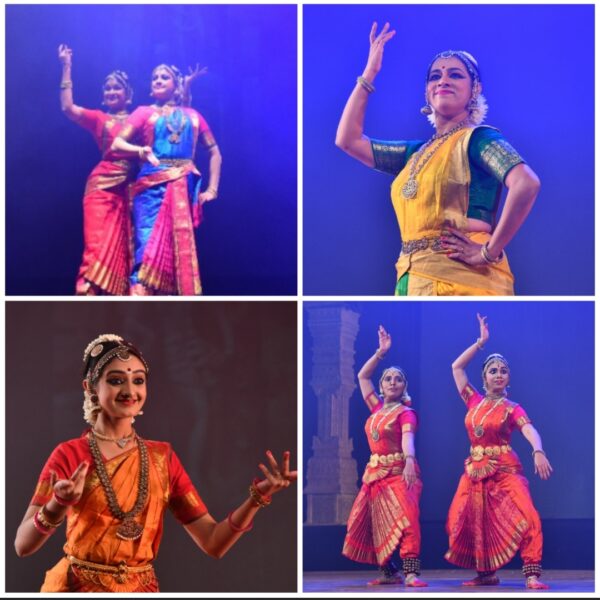

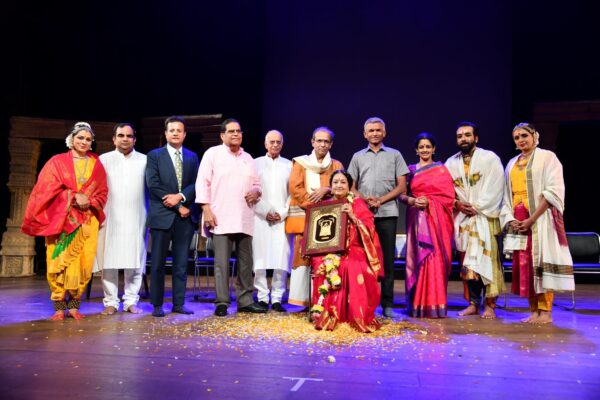
All in all Drishti has always been a fully loaded fare of dance year after year with an over-crowded hall. The evening came to an end with a grand finale of honouring Dr. Padma Subrahmanyam with an award and cash prize. Paying their rich tributes, the Bangalore artists and audience wished her a long life and felt fortunate to have been born and living in the same part of the earth and time that she is living in. We all learnt in that one evening that sharing, giving, loving, forgiving and looking at our mistakes, all are a part of our lives, all of which had been touched by all these dancers and subtly conveyed through their dance. Thank you, Drishti. Looking forward to many more years of such beautiful performances in this festival.
************
Navvarsh Mahotsav
Shashank Kiron Nair
Navvarsh Mahotsav is a much awaited, two-day dance festival that brings to the rasikas of Bangalore, performances by stalwarts from various fields of Indian classical dance. Curated by Bangalore based Kathakali exponent Sri Prabal Gupta, the festival is organized by the Saraswati Educational, Cultural, and Charitable Trust. This year, the Kathakali performance by Sri Prabal Gupta and his troupe was sponsored by ICCR under the Horizon Series and Guru Dr. Veena Murthy Vijay Vijay’s ballet was funded by the South Zone Cultural Centre, Ministry of Culture, GOI. The festival also saw the release of the book “Revival of Temple Dancing: Vasanthothsav, a celebration of dance” authored by Dr. CK Gariyali and Priyadarshini Rajkumar. Three accomplished personalities from the art field, Smt. Smitha Rajan for Mohiniyattam, Padmini Ravi for Bharatanatyam and Dr. Aarti Shetty for Bharatanatyam were awarded the Smt. Indira Gariyali award at the inauguration ceremony.
The first performance for the festival was a Mohiniyattam recital by Smt. Smitha Rajan, granddaughter of the doyen of Mohiniyattam – Guru Smt Kalyanikutty Amma and the Kathakali legend Padmashree Krishna Nair Asan . Smt. Smitha commenced her recital by paying tribute to Unni Ganapthi Tampuran through a composition of Guru Sreedevi Rajan. The piece in raga Anandabhairavi set the mood for the rest of the Mohiniattam presentation. Through this Stuthi, Smt. Smitha skillfully narrated the story of the competition between the two brothers Ganesha and Karthikeya to win the divine mango. Smt. Smitha then presented the popular varnam ‘Sumasayaka’; a masterpiece composition of Maharaja Swathi Thirunal in the heart-melting raga Shuddha Kapi, which provided ample scope for the dancer to portray the Nayika overcome by lassitude. Smt. Smitha as the Sakhi narrated the story of a damsel distressed by the arrows of Kamadeva. The evocative piece was a choreography of Guru Sreedevi Rajan. Beautiful swara passages and aesthetically drawn sequences of the Sakhi playing the veena in efforts to help the Nayika forget her yearning for Lord Padmanabha but finally discarding those efforts, as nothing could subdue her pain was brought out with finesse. The next piece Smt. Smitha performed was a poignant Tamil padam set to Ragam Bhageshri “Kanden Kanden Seethaiyai”. It portrayed a conversation between Lord Rama and his ardent devotee Hanuman who had just returned from Lanka having met Devi Sita. Through her nuanced rendition of her abhinaya choreography, Smt. Smitha was successful in bringing out the varied emotions of each character as she maneuvered through them. The concluding piece of Smt. Smitha’s Mohiniattam presentation was an Attakatha written by Sri. Muringoor Shankaran Potti. A staple in Kathakali performances later adapted to Mohiniyattam, the Kuchelavritham attakatha delineates the story of Sudhama’s meeting with his old friend, Lord Krishna. The subtleties of Sudhama’s inhibitions holding him back despite his helpless state contrasting the lord’s familiarizing demeanor was masterfully rendered by Smt. Smitha. “Ajitha Hare Krishna” in the language Manipravalam set to Sreeragam was a choreography of Smt. Smitha Rajan. Soulful singing by Sri Reju Narayanan, flute by Sri Mahesh Swami , Edakkya by Kalamandalam Sri Nidhin Krishnan , Mridangam by Kiran Gopinath and Veena by Sri Gopal Venkataramana accompanying the dance performance created a blissful experience. The next segment for the evening was “Shivoham”, a Bharatanatyam presentation by Guru Minal Prabhu’s Mudrika ensemble. The presentation opened with a Mallari in Raga Nattai. Through a series of intricate Nritta movements woven across different speeds and ‘Jaathis’, the majesty of Lord Shiva and his accompanying entourage was brought alive on stage. Nandhi Chol, a fast-paced Jathi followed, depicting Lord Shiva dancing to Nandi’s joyous playing of the Mridangam. The ‘Nandhi Chol’, composed by Vid. Karthik Dattar in Adi Talam, flowed into a Ragamalika Keethana: “Natanamanohara”. The piece showcased the majestic Tandava of Lord Shiva who is adorned by the Saptaswaras as ornaments. The Mudrika ensemble concluded “Shivoham” with “Anadi Ananta: The Seamless One”. The dancers bow to the lord in his ethereal manifestation of the ‘Pancha Bhoota’. Using a dancer’s body as an instrument to represent these elements, Guru Minal Prabhu, apparently inspired by the teachings of the Advaita Vedanta that ‘Brahman’ is the ultimate truth, envisaged this piece to celebrate these manifestations of the Brahman. The choreography primarily relied on allusive Nritta and picturesque poses, and was rendered with riveting energy by the dancers of the Mudrika ensemble. This concluded day one of the 8th Navvarsh Mahotsav.



Day two, started by honoring Dr. Raghavendra, the founder, and director of the Ananya GML Cultural Academy with the Sri Kashinath Gariyali award. Immediately following this ceremony was a Kathakali presentation by Sri Prabal Gupta and his troupe. “Manipurskshiti Rakshanotka” was inspired by Rabindranath Tagore’s Chitrangada with lyrics written in Sanskrit by Dr. Shankar Rajaraman and choreographed by Sri Prabal Gupta. Sri Sadanam Vipin Chandran as handsome Arjuna and Kalamandalam Praveen as Chitrangada delivered their roles brilliantly setting the stage for Lalitha, essayed by Sri Prabal Gupta, to steal Arjuna’s heart. Using a ‘Thiraseela’ to delineate the metamorphosis from manly Chitrangada to graceful Lalitha after being blessed by Kamadeva was well rendered. Moments of intense Sringara between Lalitha and Arjuna (Sri Prabal and Sri Vipin) including beautiful Nritta sequences and the ‘Chuzipoos’ of Kathakali adapted into the love sequences were real treats to behold. The music, composed by Sri Sadanam Jyotish Babu and sung soulfully by him and Sri Sadanam Sai Kumar supported by Edakkya and Chenda by Kalamandalam Sri Nidhin krishnan , Maddalam by Sri Devadasan and Timila by Kalamandalam Sri Rahul Nambissan was the lifeline of the production. Ragas like Abheri, Anandabhairavi, Kalyani and Yaman Kalyani were used aptly. Superb ‘Chutti’ by Kalamandalam Sri Satheesh Kumar and brilliant lighting design by Sri Nagaraj T enhanced the overall effect of “Manipurakshiti Rakshanotka”. The final segment of the festival was a Kuchipudi Yakshagana: “Ganga Gouri Vilasam” presented by Guru Dr. Veena Murthy Vijay and her team. The ballet had audiences clutching their stomachs in laughter. It’s not often that humor in classical dance clicks with the audience. Credit for this ballet’s success goes to Smt. Veena who played the ‘Sutra Dhara’ pitting Devi Ganga and Devi Gouri against each other over their Lord Shiva. Dr. Veena’s years of experience with traditional Kuchipudi productions gave her an edge to connect with the audience and achieve ‘Rasaothpatthi’. Sri Surya Rao, Smt. Rajashri Holla and Kum. Sangeeta Phanish performed excellently as Shiva, Gouri and Ganga. Smt. Priyadarshini Rajkumar said humor has been an integral part of performance arts, especially Kuchipudi, thus making ‘Ganga Gouri Vilasam’ the perfect finale for the festival that is a celebration of art.



**********
A Power-packed Margam by Aditi Saralaya
Vinita Radhakrishnan

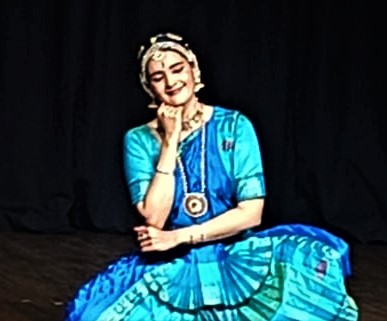 On 24th February, Aditi Saralaya, a highly talented and energetic disciple of Karnataka Kalashree Guru Smt. Minal Prabhu performed a Margam for Dr. M.D. Parthasarathy and Smt. Sushila Parthasarathy Memorial Programme, at the Indian Institute of World Culture, Bangalore. Her Margam was primarily Krishna centric and she was a vision of beauty and grace in her blue costume, fitting to the theme of her margam. Aditi commenced her performance with a traditional Malari in Raga Gambheera Nattai and Adi tala. This energy intensive and complex choreography gave Aditi the perfect platform to portray her command over her art. Crisp movements, immaculate lines of the Kalakshtra fame, complex jathis and her control and stamina made the execution of this piece a treat to watch. The malari was followed by a Puranara Dasa Kriti “Gajavadana Beduve” another beautiful Choreography of her Guru set to Raga Hamsadhwani, set of Adi Tala. Aditi presented this piece with her peppy and youthful energy. The very innovative and musically catchy jathi at the beginning of the piece still remains fresh in my mind.
On 24th February, Aditi Saralaya, a highly talented and energetic disciple of Karnataka Kalashree Guru Smt. Minal Prabhu performed a Margam for Dr. M.D. Parthasarathy and Smt. Sushila Parthasarathy Memorial Programme, at the Indian Institute of World Culture, Bangalore. Her Margam was primarily Krishna centric and she was a vision of beauty and grace in her blue costume, fitting to the theme of her margam. Aditi commenced her performance with a traditional Malari in Raga Gambheera Nattai and Adi tala. This energy intensive and complex choreography gave Aditi the perfect platform to portray her command over her art. Crisp movements, immaculate lines of the Kalakshtra fame, complex jathis and her control and stamina made the execution of this piece a treat to watch. The malari was followed by a Puranara Dasa Kriti “Gajavadana Beduve” another beautiful Choreography of her Guru set to Raga Hamsadhwani, set of Adi Tala. Aditi presented this piece with her peppy and youthful energy. The very innovative and musically catchy jathi at the beginning of the piece still remains fresh in my mind.
The Kriti was followed by a Contemporary Varnam in Kannada “Neela Megha Shyama, in Raga Malika, set to Adi Tala. This varnam is a Composition of Vid. G Gurumurthy and ingeniously tied to music by Vid. Balasubhramanya Sharma. While I personally enjoy watching traditional varnams which I can hum with over the non-traditional ones, this musically rich piece was an absolute delight to watch. The complex jathis which Aditi executed like a breeze were further enhanced by the beautiful rendition of Guru Minal Prabhu’s Nattuvangam. The varnam was also the first instance in the margam where Aditi got an opportunity to exhibit her subtle and yet effective Abhinaya. After the Varnam, she swiftly moved to her next piece “Neene Anatha Bandhu” another Purandara Dasa Kriti. This is another master Piece from Guru Minal Prabhu’s repertoire and wonderfully rendered by Vid. Balasubhramanya Sharma. I particularly liked Aditi’s abhinaya and presence when she enacted the game of dice and Draupadi’s Vastraharana episode. Her portrayal of Shakuni with his pure evil and cunning motives was an absolute treat to watch. Her Portrayal of Draupadi with a mix of arrogance, anger, disgust and helplessness was also very effective.
This was followed by a Padam “Mogudochi” in Sahana. Aditi portrayed the Mugdha abhisarika with such ease and genuinenity. There was something very pure and untainted in her abhinaya, in this piece especially. It was evident that Aditi had made this piece her’s without being drawn to the temptation of imitating her guru or for that matter anyone else. It was an absolute treat to watch. She concluded her margam with the famous Kalinga Narthana Thillana. While the choreography of Guru Minal Prabhu’s version of this piece is easily one of the best I have seen so far, it is evidently very demanding with the need for energy, precision and balance. Aditi aced its execution like a professional dancer and this piece was a very fitting ending to her wonderful margam presentation.
*****
